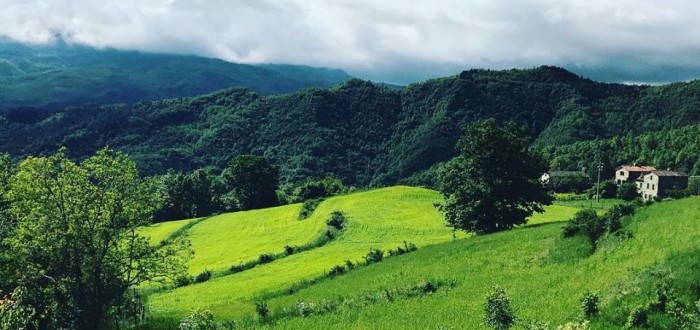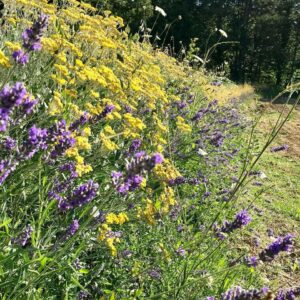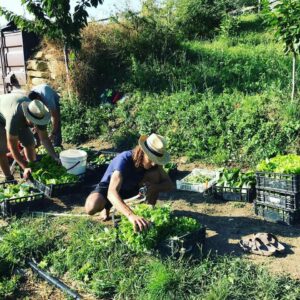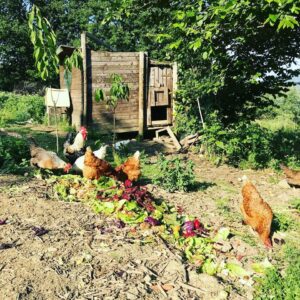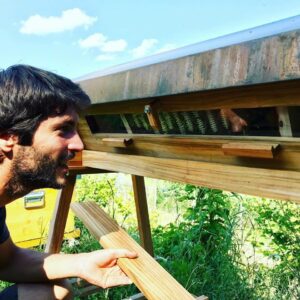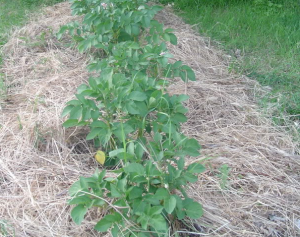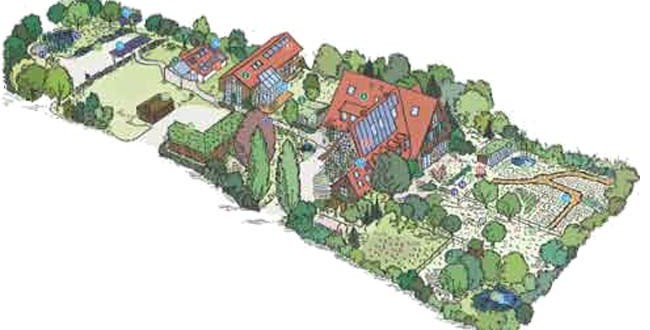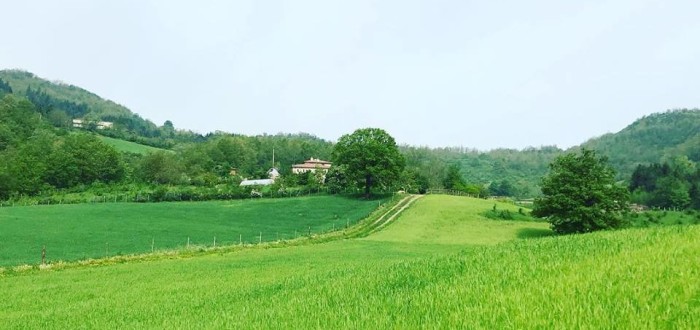Natural agriculture can save the world
From the obvious disasters of agribusiness to the extraordinary productivity of people and environmentally friendly little farms
There are hundreds of ways of doing agriculture and many different facets, but generally speaking we can divide agriculture into two broad categories. The first category is industrial agriculture, characterized by a constant research to replace the natural systems that regulate the earth’s cycles with artificial systems that, in theory, should help achieving better results for humans. The second category, which could be defined as natural agriculture, seeks to understand the cycles of the earth more fully in order to imitate and benefit from them. It is an agriculture that requires much more knowledge and manual labour and is oriented towards self-sufficiency and territoriality.
Natural and artificial agriculture in comparison
Artificial agriculture makes extensive use of heavy and very energy-consuming agricultural machines, chemical fertilizers and pesticides and seeds that are selected and genetically manipulated by large multinational giants. This type of agriculture is always subsidized, in our case by the European Community, which allocates 50% of its budget to agriculture. Natural agriculture, on the other hand, makes extensive use of manual labour and tries to use natural alternatives as much as possible in order to fertilize and protect crops. Usually natural farmers use self-produced seeds, or they search for ancient disease-resistant varieties, which have been selected over the centuries. They do not grow varieties selected by the large seed-producing industries, as they have been specially designed to be used in the industrial method.
From GDP to GDW
Artificial agriculture certainly creates a very interesting GDP (Gross Domestic Product). Thanks to this type of agriculture, the industries that produce machinery, the oil industry, the seed industry and the chemical industry are doing roaring trades and growing constantly. Soils are becoming more impoverished every year and require more and more chemical fertilizers; water becomes more and more polluted and therefore more and more expensive, waste and scraps are high and allow excellent profits for landfills and purification systems, while monocultures are the ideal ground for the development of diseases and pathogens for which the use of pesticides is necessary. Natural agriculture does not create a high GDP but it certainly increases the GDW (Gross Domestic Welfare).
To be successful with natural agriculture it is essential to make the soil more and more fertile and in order to do that there must always be organic matter in decomposition, as it happens in the forest. This makes the soil rich in microorganisms, which actually represent the soil fertility index. It is essential to increase biodiversity as much as possible with plants, flowers and trees, so that many insects, birds, reptiles, amphibians are also attracted. It is necessary to maintain a natural balance where each insect and / or animal has its natural predator.
I know a farmer who cultivates more than 100 hectares of land on his own. He is a hard worker and spends most of his life inside a huge tractor. He tills the soils at great depth and speed, he fertilizes and chemically weeds them to save time and all his work is mechanized. Having to plan any operation he does in all the lands well in advance, he uses preventive chemical treatments for all the diseases that could occur, so that he is sure not to lose the harvest. At the end of the year, the highest cost in its balance sheet is given by expenses related to agricultural machinery, diesel, fertilizers and pesticides. Luckily, he has no labour costs and takes a lot of subsidies from the European Community, so he manages to make a decent income from his work. Its production is mainly intended for animal feeding.
People and environmentally friendly little farms
Recently, I have come to know Charles and Perrine from La Ferme Du Bec Hellouin in France. They own a farm of about 3 hectares that gives work to 8 people. In proportion, in a farm of 100 hectares, over 250 people could be employed and the income that in an artificial farm is turned over to the mechanical, oil and chemical industries, would be shared among them. Charles and Perrine’s lands are cultivated only manually and although initially the soil was very poor, it is thriving now. They are able to produce an enormous quantity of fruit and vegetables in a very small space and their products are requested by the best chefs in the area, who are able to enhance their incredible taste. In a few years they have shown the world how their way of farming without chemicals and without machines could feed all of humanity and also support significant population growth. Their company does not produce waste, it does not pollute water and air and despite this, it produces much more income than an industrial company could do. What is their secret? A great knowledge of biology, chemistry and botany thanks to many years of studies and field tests.
We are Nature
Trying to draw conclusions from what my eyes see, there is an industrial agriculture which is the one that is academically proposed as the future, which has the consequences of destroying life in the soil, it is not very beautiful to see, it pollutes soil, aquifers and air, it does not create employment, it transfers the wealth away from the place of production – as most of the income goes to the industry sector – and as a result products are very poor in terms of organoleptic quality. Today this type of agriculture is practiced mainly for the crazy production of energy foods for the breeding of herbivorous animals, which should eat grass to stay healthy, but instead are fed with grains of various kinds to produce more meat and faster.
Natural agriculture is one of the few opportunities we have left to reverse the decline trend in which we find ourselves. It is able to give employment to the world population, as it once did, with the difference that in the past we did not have the knowledge we have today and therefore everything was much more difficult and tiring. This agriculture is able to restore contact with nature, which is essential for our health. There are so many examples – many of which I have had the opportunity to see in person – of idyllic farms led by people who have chosen to think and act outside the box and who have started a new path. Today, there are no more excuses to continue to promote and subsidize industrial agriculture, as academic studies have shown that it is madness, both in economic and environmental terms. Despite this, industrial agriculture is promoted through subsidies and propaganda by the petrochemical industry, which follows a much broader plan that goes beyond agriculture.
What happens today with agriculture unfortunately happens with humans too, but perhaps we find it more difficult to understand it and for this reason natural agriculture can be a new paradigm, a direction that can change our lives. There is no difference between a drug and a pesticide, except that the latter pollutes the human being, while the first one pollutes the earth. We are constantly bombarded with propaganda, often hidden, which leads us to increasingly distance ourselves from natural life. Human beings have lived for hundreds of thousands of years as part of Nature, while now, within a few decades, we have found ourselves living surrounded by concrete, asphalt, pollution, electromagnetic waves and smog, coming into contact with chemicals of all kinds…to the point that today we speak of Nature as a third element compared to ourselves.
We must get out of the prisons that big multinationals have led us into. We are part of Nature and our job is to guard it, not to destroy it.
Francesco Rosso
Newsletter
ARGOMENTI
- Activities (8)
- Attività (10)
- Attrattive (16)
- Cosa fare (22)
- Farm products (4)
- Fattoria dell'autosufficienza (39)
- Fattoria dell'autosufficienza (51)
- Fauna (8)
- Flora (5)
- I nostri modelli (14)
- Istruzioni per viaggiare (2)
- News (63)
- News (96)
- Our models (14)
- Permacultura (30)
- Permaculture (23)
- Prodotti della fattoria (4)
- Senza categoria (4)
- Senza categoria (2)
- Things to do (22)
- Tourist attractions (15)
